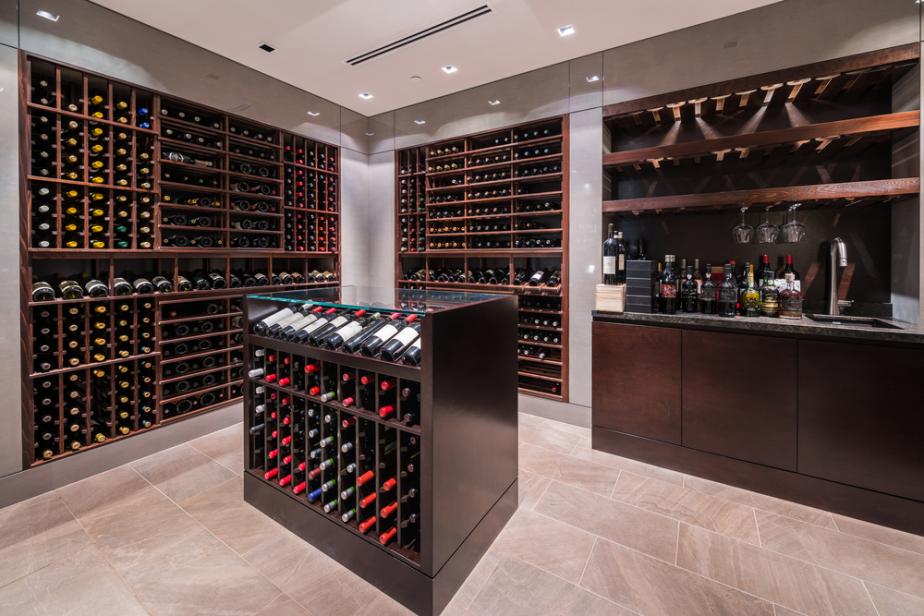
What Temperature Should Wine Be Stored at?
The temperature at which you drink your wine is not the same as the temperature at which it should be stored. While there are general guidelines around the drinking temperature – this is also driven by personal preference. However, storage temperature is important, and it is more important to follow these guidelines more stringently in order to protect and preserve the integrity if the wine.
Cranville has put together this wine storage temperature guide to give you a clearer idea about what is required, and how to create the perfect environment.
What Temperature Should Red Wine Be Stored at?
The ideal storage for red wine is between 8°C and 18°C (45-65°F), with the mid point being the ideal temperature. Anything above or below this range will affect the overall quality of the wine.
What Temperature Should White Wine Be Stored at?
The average wine storage temp for white wine is lower than red – between 8°C and 12°C. And for Champagne it is even lower – between 5°C and 8°C.
If you are looking to lay wines for a long period of time the consistency of that temperature is crucial, as any fluctuations will again affect the quality of the wine, and ultimately your overall investment.
What Happens if the Storage Temperatures Are Too High?
The following are signs that you need to be looking out for if you suspect the wine storage temp is too high.
The cork is a clear sign of a wine bottle being stored at too high a temperature. It can result in the cork drying out, expanding, contracting and ultimately breaking up. If this happens, oxygen can enter the bottle accelerating oxidisation of the wine and spoiling its taste.
You can spot this cork damage either by the cork itself sticking out above the rim line of the bottle neck, and also by observing a sticky residue around the cork.
To warm a temperature can also lead to the wine being ‘cooked’ in the bottle, which significantly affects the taste. It causes the wine to taste flat and acidic, like stewed apples, and the overall flavour structure becomes confused.
What Happens if the Storage Temperature is Too Low?
As long as the temperature is not beyond freezing point, a lower temperature will not affect the wine taste too significantly. However, it will slow down the aging process, which in turn will affect the overall value of your wine collection. If you are looking for capital growth on a wine collection, you must need to be able to demonstrate that you have stored it at correct, consistent temperatures in the right environment for a greater chance of it holding value.
The bigger concern is that if the wine is stored in an environment that can reach freezing temperatures, the liquid inside the bottle will expand as it freezes and cause the bottle to crack. Even if this is not initially noticeable, as the bottle warms and the wine turns back to liquid, it could allow oxygen to enter the bottle and reach the wine, causing it to oxidise.
Can I Store Red Wine at Room Temperature?
It is perfectly acceptable for red wine to be stored at room temperature if you know that it is going to be opened and consumed within a short period of time. However, you need to take into account the temperature of the room you are operating in, and also any outside temperatures too.
A wine contains a combination of key flavour elements – sour, sweet, bitter. If the wine is too warm the alcohol will evaporate off more quickly which will in turn distort the flavour. So n the heat of the summer you may want to cool it down in a fridge to avoid it getting too warm too quickly prior to serving.
What Are the Other Elements of Good Wine Storage?
Beyond understanding what temperature should wine be stored at, here are a few more guidelines about how to best store your wine.
- Always store the bottles horizontally. This ensures that the wine is kept in contact with the cork, which prevents it drying out and breaking up.
- Keep the ambient temperature as consistent as possible. Slight variations are not too much of an issue as long as they are gradual. It is the peaking and troughing that can cause real issues.
- Avoid extreme highs and lows in humidity – preferably around 70 per cent. Too high and you will get mould and mildew growth. Too low and the cork can dry out.
- Avoid vibrations. Not only can they cause disturbance of the sediment, but the energy vibrations produce can cause a chemical reaction in the bottle which will change the balance of acids and decrease tannins.
- Maintain a subdued, dark ambience – sunlight and UV rays can also cause photochemical reactions in wine, which again cause unwanted variations in taste, smell and structure of the wine.
Further Help and Advice About Wine Storage Temp and Conditions
Cranville is more than happy to provide advice and guidance when it comes to ordering racks for storing bottled wine in a cellar or anywhere else on your premises. Drop us a line for more information.
 Designed and Manufactured in the UK
Designed and Manufactured in the UK 